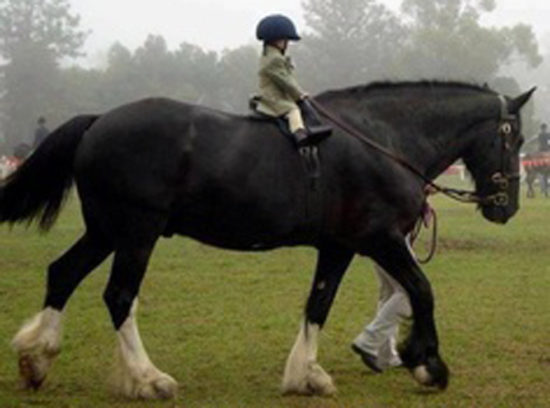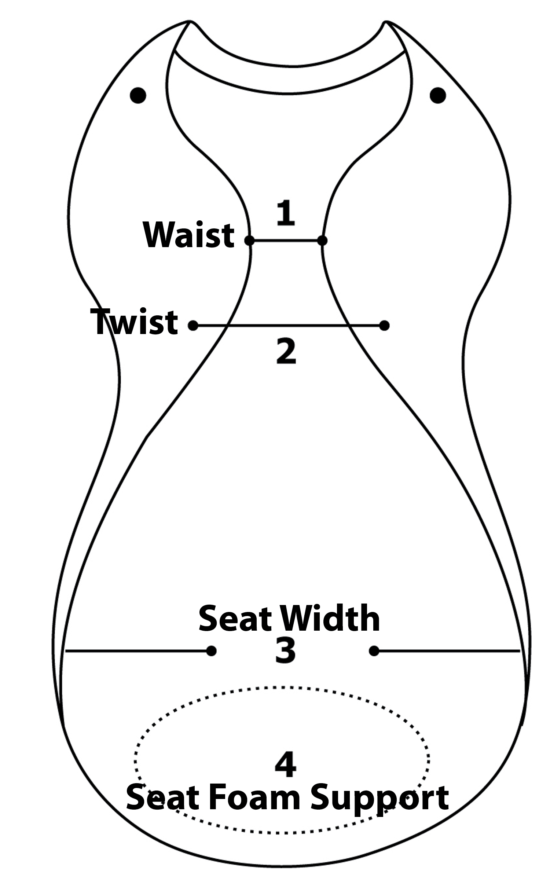Saddle Fit and “Shorties”
 We’ve discussed saddle fit for the heavier rider in a previous blog, but I have recently been asked several times about what issues to consider for the extra tall or extra short rider, who both seem to have troubles finding saddles to fit properly. Obviously there are considerations for all body types, male or female, which unfortunately too many saddle manufacturers do not look at in their saddle designs. Too many saddles are still very much ‘cookie-cutter’ models.
We’ve discussed saddle fit for the heavier rider in a previous blog, but I have recently been asked several times about what issues to consider for the extra tall or extra short rider, who both seem to have troubles finding saddles to fit properly. Obviously there are considerations for all body types, male or female, which unfortunately too many saddle manufacturers do not look at in their saddle designs. Too many saddles are still very much ‘cookie-cutter’ models.
You can pretty much turn some of the stuff I’m going to say now around by 180⁰ to accommodate a taller rider. To create a saddle for a short rider, just shortening the flap will not create a better fit (as just lengthening it doesn’t always work for the taller rider. You need to consider flap angle and position of your knee pad and thigh roll). When the knee roll or the leg support of the saddle hits your knee, it can turn your leg away from your horse, and it will be difficult to keep your lower and upper inner leg against the horse.
The first thing to do for better saddle fit is to get a saddle with a narrow twist. The twist is very often misunderstood. People think it is in the crotch area. However, the twist is the part of the saddle that is between rider’s upper, inner thighs. A wide twist under a short rider makes even more room away from the leg and the rider will sit as if on a barrel, unable to get her leg on the horse. Women, in particular, are much better off with a narrow twist because of the way their pelvises are shaped.
 I have worked in Germany, England, Canada, USA, Australia and South Africa and in each country the twist is called something different. Basically, it refers to the area the rider feels between his upper, inner thigh. In England I believe the twist is referred to as the waist. It is an arbitrary designation; what is crucial is the area on the saddle it refers to, which must be considered when fitting a saddle.
I have worked in Germany, England, Canada, USA, Australia and South Africa and in each country the twist is called something different. Basically, it refers to the area the rider feels between his upper, inner thigh. In England I believe the twist is referred to as the waist. It is an arbitrary designation; what is crucial is the area on the saddle it refers to, which must be considered when fitting a saddle.
The twist has absolutely nothing to do with the horse. You can have a vary narrow on a saddle for a very wide horse and vice versa. The rider’s upper thigh lies against the stirrup-bar area, which is actually far away from the horse. So the tree width, as most people understand it, is for the horse, and the twist is for the rider.
Next, a short rider needs a medium to wide waist on the saddle. The waist lies directly underneath the crotch area where seams hold four areas together and are quite bulky. A medium to wide waist ensures that a short-legged rider will not be rubbed or bruised. Since the female pelvis is tilted somewhat more forward than the male pelvis, a narrow waist could hit the side of the pubic symphysis and cause pain.
A wide seat – the widest part in the back of the saddle – will give a short rider more comfort. In general, women are better off with a wide seat width in any case because their seat bones are wider apart than men’s seat bones. This is regardless of height or weight.
Also, a saddle with a half panel, instead of a full panel on the underside of the saddle, reduces layers and stuffing between the rider and horse. The half panel helps a short-legged rider get more control with her lower leg and upper, inner leg, especially when riding horses with wide barrels. Fitting ease can vary depending on the horse. This may be a matter of preference for long-legged riders as well.
A saddle’s seat size also depends on the size of the horse. Just being short-legged doesn’t mean you need a small seat size. I know of very small, slim women who ride in 18½-inch saddles. Seat size depends on the circumference of the rider’s hips and upper leg. It also depends on the length of the horse’s back and belly. Discussing seat size leads to a completely different article – concerning also the pommel (cut-back, quarter-cut-back, or not) as well as tree width – and of course consideration of the horse’s saddle support area itself.
If you are a short-legged rider, choose a saddle with a narrow twist, a medium to wide waist, a wide seat and a half panel, in addition to a shorter flap. Also, consider a professional saddle-fitter to help you find the right saddle that not only fits you but also fits your horse. Remember the pommel has nothing to do with the rider; it’s designed to accommodate the horse’s withers. There are several areas of tree width you can consider, but again, most of these have to do with fitting the horse, not the rider. Just remember that it is extremely important that you as the rider are comfortable in your saddle; otherwise – no matter how well the saddle fits the horse, he will never perform to his optimum potential because your discomfort will translate down through the saddle to your horse.
©2016 Saddlefit 4 Life® All Rights Reserved
